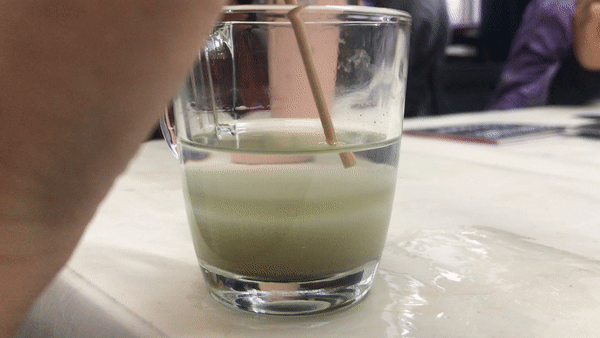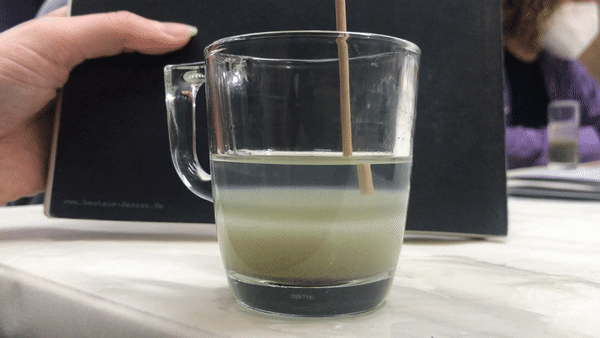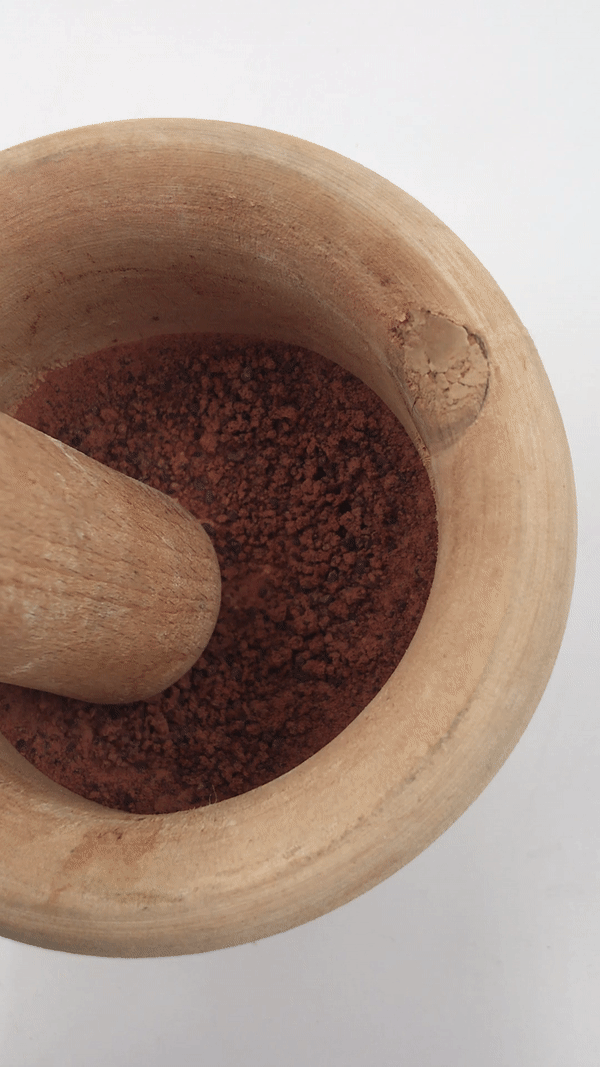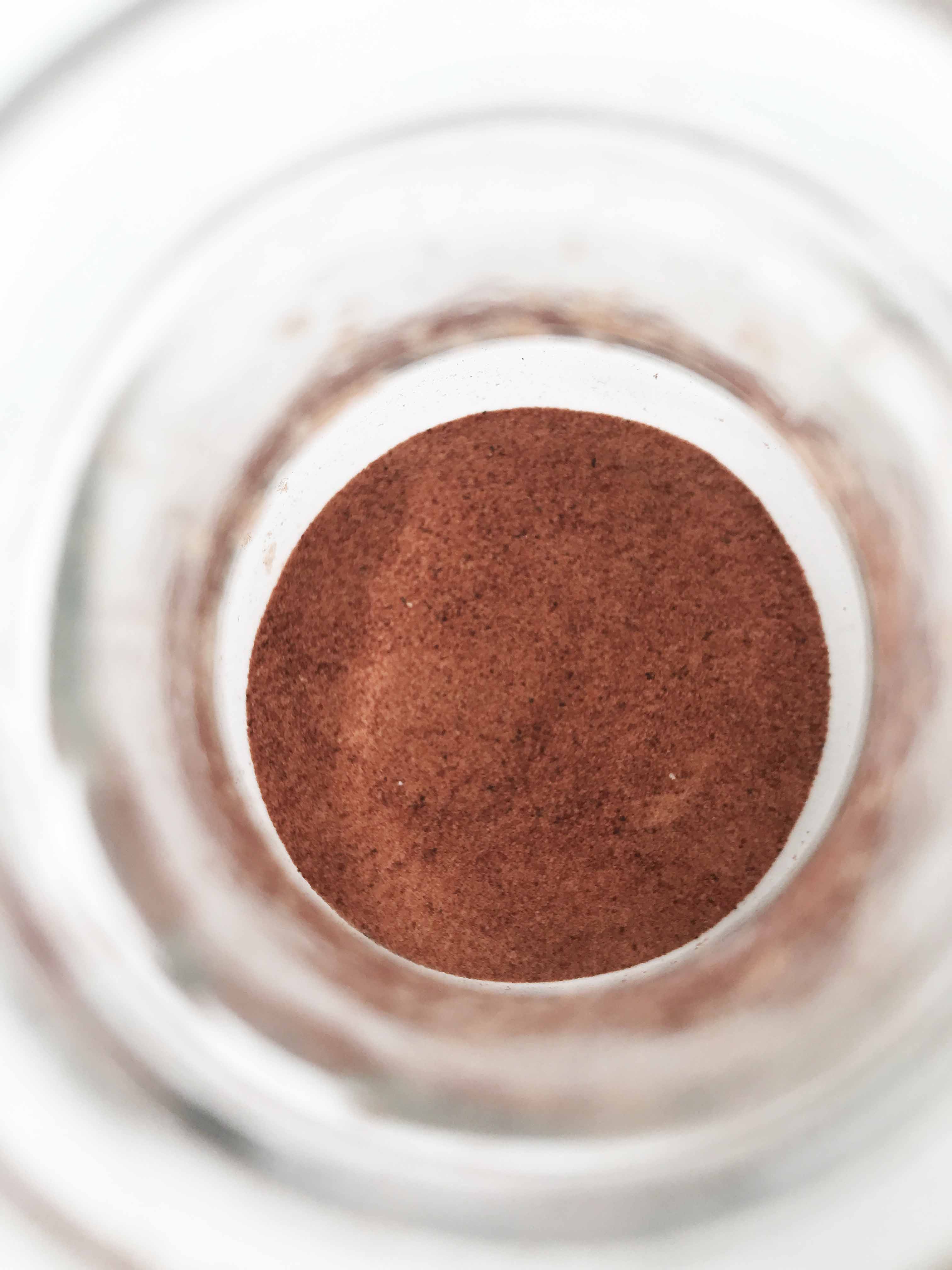X. | OPEN SOURCE HARDWARE - From Fibers to Fabric¶

| DIY DNA EXTRACTION |¶
with Elizabeth Henaff from the Technology, Culture and Society department at the NYU Tandon School of Engineering in New York City.
About¶
- Microbiome is the community of microorganisms that can usually be found living together in any given habitat.
Ingredients¶
| a. | b. | c. | d. | e. |
|---|---|---|---|---|
| Soap (liquid) | Destilated water | Salt | Soil | Cold Etanol |
| 2 ts | 1/2 cup | 1 ts | 100 g | chupito |
Tools¶
- plastic bag (zipper), measuring cup, spoon, paper (coffee) filters
Process¶
- Place the soil in a plastic bag and water with water to cover everything. * Crush all the lumps with your hands over the bag. * In a glass jar mix soap with salt and water. After add it in the plastic bag. * Filtrate the mixture using a coffee paper filter. * Place the filtered solution in a small cup (chupito).
- Tilt the chupito to the side and place the neck of the ethanol bottle next to the cup. Ethanol must touch the glass during casting, not directly the mixture.
- Do it very carefully and slowly.*
* Straighten the chupito again and pick up a toothpick. - Slowly dip the toothpick into the solution and pull upwards. You will see a tiny fiber of DNA!


Result¶


| SPINNING MACHINE - CELLULOSE FIBERS |¶
CELLULOSE FIBERS¶
REFERENCIES¶
- The production of viscose fibres, Kelheim Fibres
- From wood cellulose to textile fibres
- Processing pulp to viscose fibers
AVOCADO PITS¶
| a. | b. | c. |
|---|---|---|
| Cellulose | Hemicellulose | Lignin |
| 26 – 38 % | 24 – 26 % | 4 % |
- Component of avocado seed starch
| a. | b. | c. | d. | e. | f. |
|---|---|---|---|---|---|
| Water | Ash | Lipid | Protein | Amylose | Amylopectin |
| 16.6 % | 0.23 % | 1.09 % | 2.16 % | 0.07 % | 73.55 % |
REFERENCES¶
- Persea Americana, Agro-Industrial Waste Biorefinery for Sustainable, 2021
- Production of bioplastic from avocado seed starch reinforced with microcrystalline cellulose from sugar palm fibers
HILO SPINNING MACHINE¶


Materials¶
| N. | Material name | Quantity | Source |
|---|---|---|---|
| 1. | Polywood 4 mm | 1 board | Fab Lab BCN |
| 2. | Hook screw 20 mm long | 8 | Fab Lab BCN |
| 3. | Aluminium tube 240 mm, ∅ 15 mm | 2 | Fab Lab BCN |
| 4. | Aluminium tube 165 mm, ∅ 12 mm | 1 | Fab Lab BCN |
| 5. | 6V DC Motor | 1 | Fab Lab BCN |
| 6. | 10K Potentiometer | 1 | Fab Lab BCN |
| 7. | C2625 Transistor | 1 | Fab Lab BCN |
| 8. | Alternate Current Adapter | 1 | Fab Lab BCN |
Laser cutting¶
| Material | Thickness | Speed | Power | Cutting time |
|---|---|---|---|---|
| Polywood | 4 mm | 1 | 100 | 10 min 10 s |
ELECTRONICS¶
HARDWARE¶
DC Motor circuit¶
- DC motor
- IRF540N MOSFET(N) Transistor
- Potentiometer 10kΩ
- Power supply of 5V or more, depending on the motor

REFERENCES¶
- HILO Spinning Machine
- Cathrine Euale, Hilo Spinning Machine DIY
- Cathrine Euale, Alginate Bioyarn Extruder
BIOYARN MACHINE¶

STRUCTURE¶

Materials¶
| N. | Material name | Quantity | Source |
|---|---|---|---|
| 1. | Syringe 60 mml | 1 board | Pharmacy |
| 2. | 3D printed parts | 4 | Fab Lab BCN |
| 3. | Metal rods (smooth) 300 mm, ∅ 7 mm | 2 | Fab Lab BCN |
| 4. | Metal rods (spiral) 300 mm, ∅ 7 mm | 1 | Fab Lab BCN |
| 5. | Polywood 4 mm | 1 | Fab Lab BCN |
| 6. | M3 20 mm | 5 | Fab Lab BCN |
| 7. | Cap nuts | 5 | Fab Lab BCN |
| 8. | Aluminium tube | 3 | Fab Lab BCN |
| 9. | Plastic tube | 3 | Fab Lab BCN |
| 10. | Stepper motor | 1 | Fab Lab BCN |
| 11. | Arduino Microcontroller | 1 | Fab Lab BCN |
| 12. | Arduino CNC Shield | 1 | Fab Lab BCN |
| 13. | Power supply | 1 | Fab Lab BCN |
| 14. | Alternate Current Adapter | 1 | Fab Lab BCN |
Laser cutting¶
| Material | Thickness | Speed | Power | Cutting time |
|---|---|---|---|---|
| Polywood | 4 mm | 1 | 100 | 5 min 30 s |

Components & Assembly¶








ELECTRONICS¶
HARDWARE - STEPPER MOTOR + ARDUINO¶
Stepper Motor circuit¶
- Arduino Mega
- RAMPS 1.4 RepRap Shield
- Nema 17 Stepper Motor * Stepper Motor Driver
- Potentiometer 10kΩ
- Power supply
SOFTWARE¶
- Arduino is not necessary to control DC motor with a potentiometer, it just gives more control options thank to the mapping option. DC motor + Mosfet + potentiometer could work alone though.
Arduino code¶
- Simple Stepper Motor - Extruder
int enablePin = 38;
int dirPinM1 = 55;
int Pulse = 54;
int POT = A5;
//int oldstepDelay = 0;
int stepDelay = 0;
bool start = true;
bool dir = false;
bool enableMot = 1;
int maxdelay = 3000;
int mindelay = 250;
void setup() {
// put your setup code here, to run once:
//Serial.begin(115200); if uncommented the motors runs slower due to serial wait timings
pinMode(POT, INPUT);
pinMode(enablePin, OUTPUT);
pinMode(dirPinM1, OUTPUT);
pinMode(Pulse, OUTPUT);
start = 0;
// Serial.println("Starting");
}
void loop() {
if (start == 1) {
digitalWrite(enablePin, LOW);
digitalWrite(dirPinM1, dir);
}
if (start == 0) {
digitalWrite(enablePin, HIGH);
}
int potPos = analogRead(POT);
// Serial.println(potPos);
//stepdelayMicroseconds = map(analogRead(POT),0,1024,1,maxdelayMicroseconds);
// make the motors move both irections depending on pots position
if (potPos < 500) {
start = 1;
digitalWrite(dirPinM1, HIGH);
stepDelay = map(potPos, 0, 500, mindelay, maxdelay);
//Serial.println("clockwise");
//Serial.println(stepDelay);
}
else if (potPos > 600) {
start = 1;
digitalWrite(dirPinM1, LOW);
stepDelay = map(potPos, 600, 1023, maxdelay, mindelay);
//Serial.println("counterclockwise");
//Serial.println(stepDelay);
}
else {
start = 0;
}
motorStep();
}
void motorStep() {
//if(start == 1){
digitalWrite(Pulse, HIGH);
delayMicroseconds(stepDelay);
digitalWrite(Pulse, LOW);
// }
}
REFERENCES¶
- RAMPS 1.4 Pinout Image
- Marlin Firmware
- Marlin Github
- Nema17 Datasheet /for max Current/
- Stepper Driver Calibration
- Tutorial for moving stepper with Arduino
- EDUARDO CHAMORRO's documentation
AVOCADO POLYMER (starch)¶
- CELLULOSE EXTRACTION FROM AVOCADE WASTE (pits)
Tools¶
- knife, grinder, cooking pot, coffee filter / textile, taper or bowl
Process¶
- You can use leftovers - avocado pits from natural dyeing (Week 04 - Biochromes). After you boiled them, cut them in quarters and grind the pits using a grinder or cold press juicer. * Store grounded avocado leftovers in a plastic or glass container and cover it with water (2 cm above the layer of the grounded pits). * Leave it in the water for an hour. * Filter it with a paper filter or you can also use a textile (but not too thin).
- Now you have to wait for the water to evaporate. It depends on how much water you have used and the room temperature. * You can remove a low layer of water or in my case it took 1-2 days to dry completely. The sediment at the bottom of your container is extracted cellulose.
- Once is dry use a pestle to thinner the starch.
The starch has a really nice natural color - red / orange.
Biomaterial - extrusion¶
- Ingredients
| Biopolymers | Bioplasticizer | Solvent | Additives |
|---|---|---|---|
| Alginate | Glycerol | Destilated water | Cellulose |
| 15 g | 50 g | 400 ml | x g |
- Solution
| a. | b. |
|---|---|
| Calcium Chloride | Water |
| 10 g | 100 ml |
- Sodium Alginate
- Description: Sodium alginate is a water-insoluble, gelatinous, cream-coloured substance that can be created through the addition of aqueous calcium chloride to aqueous sodium alginate. It has many applications in biology, but primarily known for its healing properties due to the compound's ability to encase enzymes in order to simulate new plant tissue.
-
Alginate is a naturally occurring anionic polymer typically obtained from brown seaweed due to its biocompatibility, low toxicity, relatively low cost, although the addition of divalent Ca2+ (calcium ions) results in mild gelation. Thus, considered a naturally occurring biomaterial.
-
- is a simple polyol compound. It is a colorless, odorless, viscous liquid that is sweet-tasting and non-toxic. Glycerol is generally obtained from plant and animal sources where it occurs as tryglycerides. Typical sources include soybeans and palm, and animal-derived tallow. * Common uses: Food and beverage industries, pharmaceuticals, and metabolism.
Tools¶
- stirring spoon, weight, measuring cup, hand blender, glass jar, injection, gloves, dehydrator, breathable textile
Process¶
- Add the destilated water in the measuring cup, alginate powder, glycerol and blend them with the hand blender. Mix them slowly to avoid any bubbles. If you are not that lucky let it settle down for 2-3h to remove all the bubbles.
- After or before, you can add the activated chaorcal.
- Measure the water and calcium chloride and mix them properly in a transparent measuring cup.
- Fill the injection with the paste and extrude it the solution of calcium chloride.
- Immediately remove them from the calcium chloride and transfer to a second container of clean water.
- Wind them with a Hilo spinning machine.



















Material Parametres¶
- Extrusion - 3 mm
| Viscosity | Curing time | Melting point | Stickiness | Structural properties | Visual | Structure | Texture | Strengh |
|---|---|---|---|---|---|---|---|---|
| High | Naturally: 2-3 days | Fireproof | Low | Flexible | Opaque | Water resistant | x | x |
- Extrusion - 5 mm
| Viscosity | Curing time | Melting point | Stickiness | Structural properties | Visual | Structure | Texture | Strengh |
|---|---|---|---|---|---|---|---|---|
| High | Naturally: 2-3 days | Fireproof | Low | Flexible | Opaque | Water resistant | x | x |
Conclusion¶
- Techniques: knitting, weaving
Last update: 2022-01-30